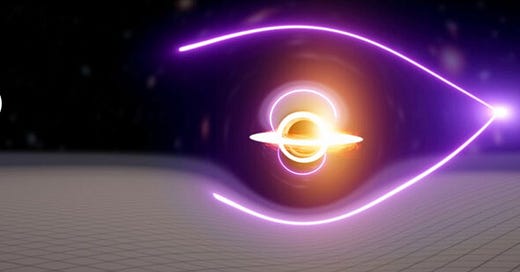By scrutinizing data collected by the Compton Gamma Ray Observatory satellite, which has been inactive since 2000, a team of researchers from the University of Melbourne has found a trace of a black hole of 55,000 solar masses. This class of intermediate black holes, predicted by simulations, had never been observed before.
In the "black hole" family, they were missing until now. A team of astrophysicists from the University of Melbourne announced, on Monday 29 March 2021, the probable discovery of the first black hole of intermediate mass: 55,000 solar masses. A feat, because these stars predicted by the models had so far escaped the various methods of detection. Whether those used for stellar black holes (up to a hundred solar masses), or for super massive black holes (a few hundred thousand to a few billion solar masses). In fact, researchers have had to be cunning to flush out this cosmic version of the Arlesian...
Too light, or too heavy
This category of black holes is difficult to find because they are in between. Stellar black holes, when they spin around, form gravitational waves captured by the Virgo detector in Italy and Ligo in the United States. A dance of this type is recorded almost every month now, but the protagonists are usually a few tens of solar masses. Supermassive black holes, on the other hand, gorge themselves on matter (gas clouds, stars, and anything else they can get their hands on) from their lair, usually in the center of galaxies. The matter supplicated by the attraction force of the giant black hole emits a high amount of energy, making the star as visible as a lighthouse for the scientists' instruments. While an intermediate black hole is too massive to form gravitational waves of a frequency accessible to detectors. And if it does not devour matter, which can happen if it is isolated, it is completely invisible.
Keep reading with a 7-day free trial
Subscribe to NEWSLETTER " the Astro Journal " to keep reading this post and get 7 days of free access to the full post archives.




